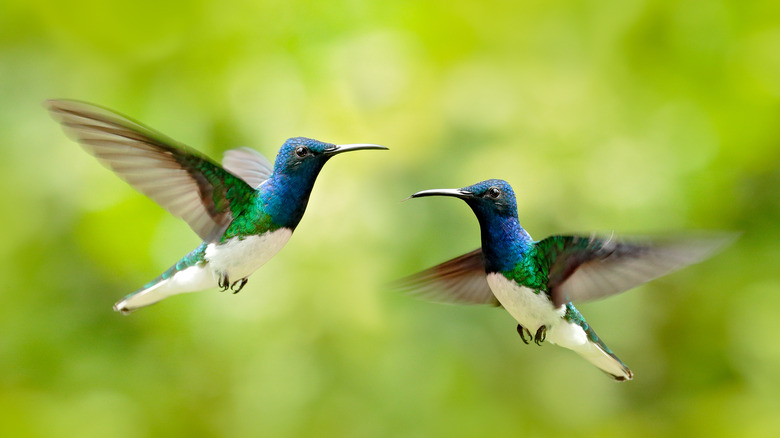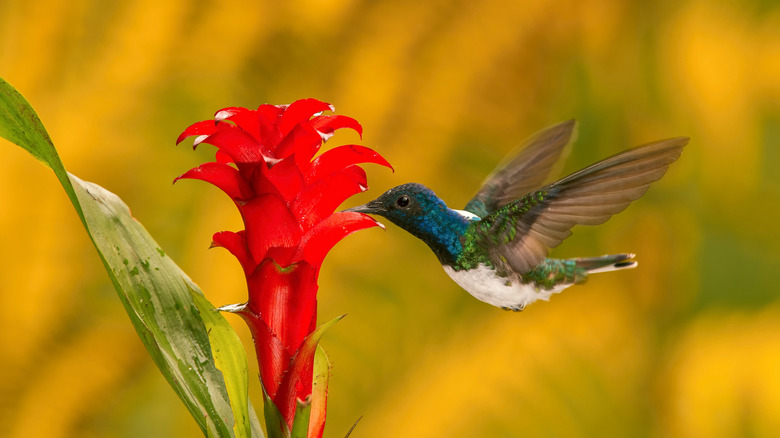The Real Reason Some Female Hummingbirds Look Like Males
Hummingbirds might be small, but they're kind of the rock stars of the bird world, at least when it comes to flying tricks. According to Hummingbird Central, the 3 to 5-inch birds are the only species that can hover, fly backward, and even fly upside down. But scientists have found those aren't the only tricks some hummingbirds are capable of.
A new study published in Current Biology found that in one species of hummingbird, females seem to be evolving to look more like males. According to the researchers, this evolution is happening because the female birds that look like males are harassed less by other members of their species. According to the study, white-necked Jacobins have the "ornamental plumage" of adult males as juveniles, but as they age, their feathers fade. What's new in the study's findings is that scientists found that 30% of adult females retain their male-like colors.
A girl's gotta eat
According to the Current Biology study — titled "Male-like ornamentation in female hummingbirds results from social harassment rather than sexual selection" — the females whose feathers look like males avoided aggressive sexual attention from their male counterparts. In addition, they were able to access food more easily without being hassled as much by other members of their species. Turns out, hummingbirds are actually pretty aggressive and territorial, and some are even bullies, per Bird Watcher's Digest.
While the authors of the study say that male white-necked Jacobins' sexual attention toward females isn't harmful, they also said, "Detrimental sexual attention and aggressive interactions are both disruptive from a female's perspective and can be viewed as non-mutually exclusive components of social harassment." What's more, they say it appears that the simple difference of brighter plumage is typically enough to "deter aggressive interactions" while the hummingbirds are competing for food.
After all, nobody wants to be harassed while they're trying to eat — or ever, for that matter. Kimberly Rosvall, associate professor of biology at Indiana University in Bloomington, was not part of the study but commented on the study to CNN: "The data suggests that these more aggressive females with the male-like plumage are better at defending a key food resource. They do more chasing and are chased less."

